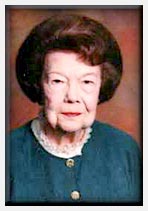An Unusual Valentine |
|
 Eloise Lane
Eloise Lane
Saint Valentine, who lived in the late 3rd century A.D., was a Christian martyr killed during the reign of Emperor Claudius. Although he has long been considered the patron saint of lovers, the custom of sending valentines on his feast day (February 14) is not connected to the saint. The ancient Romans observed a festival (Lupercalia) that occurred at the same time as Saint Valentine's feast day. For this festival, that honored a pastoral god, the Romans sent anonymously missives that were sentimental or ludicrous. In the late Middle Ages, there was a belief that birds began to mate on February 14. This notion probably suggested that lovers should exchange messages and gifts on that date. At one time it was the custom for young people of both sexes to meet on the eve of Saint Valentine’s Day. Each person drew a name of the opposite sex from a number of names placed in a common receptacle. Each gentleman got a lady for his valentine and he became the valentine of a lady. The gentlemen remained bound to the services of their valentines for a year. After postal systems were organized, the practice of mailing homemade valen- tine messages became common. The greeting card industry in the United States now prints millions of valentines each year.
Find more
These are usually in verse form and ten- der in nature, but sometimes comic and coarse. Present day valentines are associated with lace-trimmed red hearts, flowers and chocolate candy, but the White Deer Land Museum has on display a valentine which shows none of these objects. It is the valentine that Phillip Claude Led- rick had made for Fannie May White in 1896. Claude Ledrick and his brother, Lee Ledrick, were the sons of Henry Ledrick and Amanda Jane “Jenny" (Lard) Ledrick. The family came from Young County to Roberts County in 1886 and established the Ledrick Ranch on a league of school land located on Chicken Creek. (State Highway 70 runs through the Ledrick Ranch.) Although many Indians still roamed the country at that time, the Ledricks got along well with them. Fannie White, daughter of Isaac White and Elizabeth Doherty) White, was born in 1878 near Abilene, Kansas. The Isaac White family came to Roberts County in 1888 and settled on Wolf Creek. Claude Ledrick and Fannie White were married in 1901. For several years they lived on the Ledrick Ranch, but in 1907 they moved to Pampa and built a home at 421 East Kingsmill. They had no children. Claude continued to ranch, but both he and his brother, Lee, took part in Pampa's growth and became directors of Gray County State Bank. Claude (P. C.) Ledrick was on the school board when the tan brick school building was constructed at 126 West Francis. Mrs. P. C. Ledrick was a charter member of El Progresso, a study club organized in 1923. Claude Ledrick died in 1943 and Fannie White Ledrick died in 1959.
Find more
These are usually in verse form and ten- der in nature, but sometimes comic and coarse. Present day valentines are associated with lace-trimmed red hearts, flowers and chocolate candy, but the White Deer Land Museum has on display a valentine which shows none of these objects. It is the valentine that Phillip Claude Led- rick had made for Fannie May White in 1896. Claude Ledrick and his brother, Lee Ledrick, were the sons of Henry Ledrick and Amanda Jane “Jenny" (Lard) Ledrick. The family came from Young County to Roberts County in 1886 and established the Ledrick Ranch on a league of school land located on Chicken Creek. (State Highway 70 runs through the Ledrick Ranch.) Although many Indians still roamed the country at that time, the Ledricks got along well with them. Fannie White, daughter of Isaac White and Elizabeth Doherty) White, was born in 1878 near Abilene, Kansas. The Isaac White family came to Roberts County in 1888 and settled on Wolf Creek. Claude Ledrick and Fannie White were married in 1901. For several years they lived on the Ledrick Ranch, but in 1907 they moved to Pampa and built a home at 421 East Kingsmill. They had no children. Claude continued to ranch, but both he and his brother, Lee, took part in Pampa's growth and became directors of Gray County State Bank. Claude (P. C.) Ledrick was on the school board when the tan brick school building was constructed at 126 West Francis. Mrs. P. C. Ledrick was a charter member of El Progresso, a study club organized in 1923. Claude Ledrick died in 1943 and Fannie White Ledrick died in 1959.

